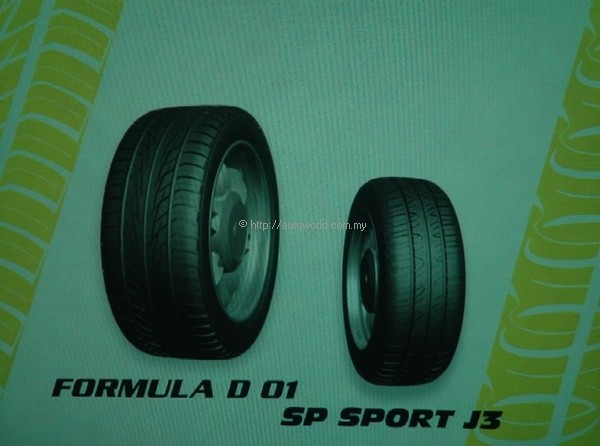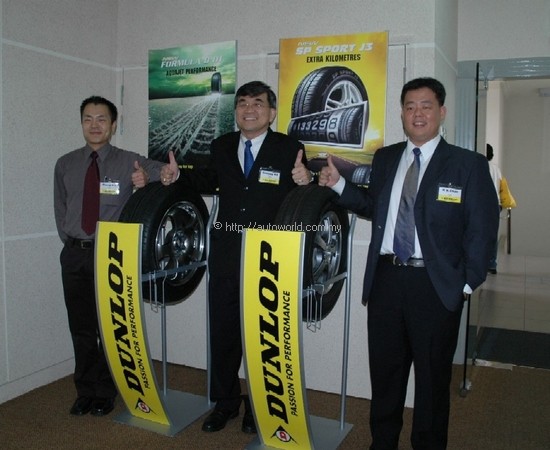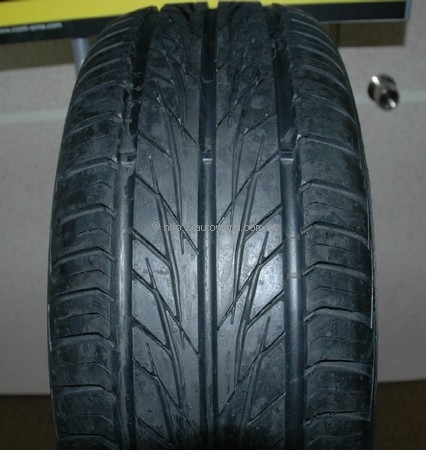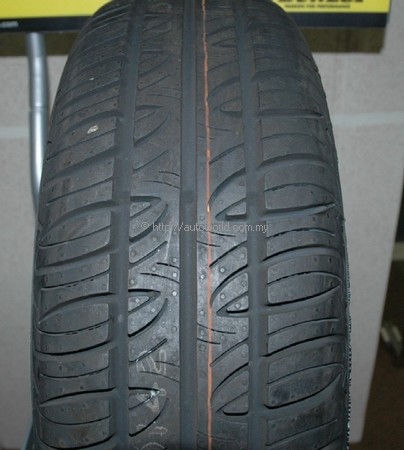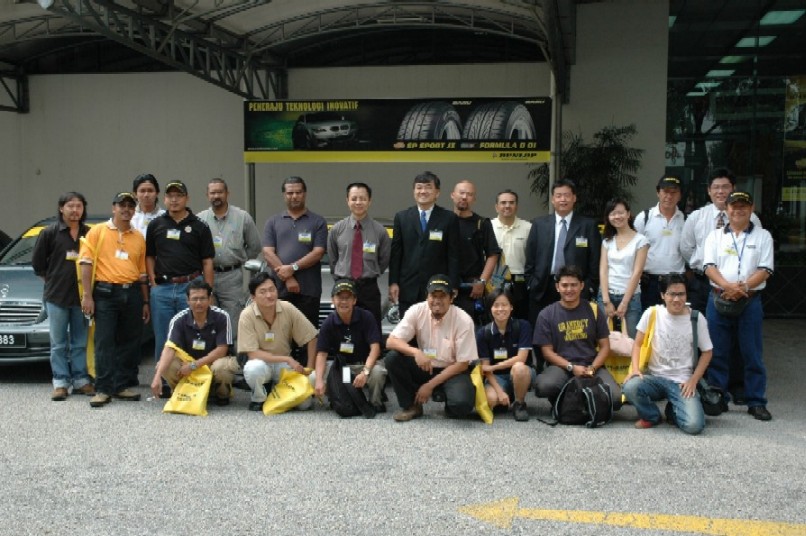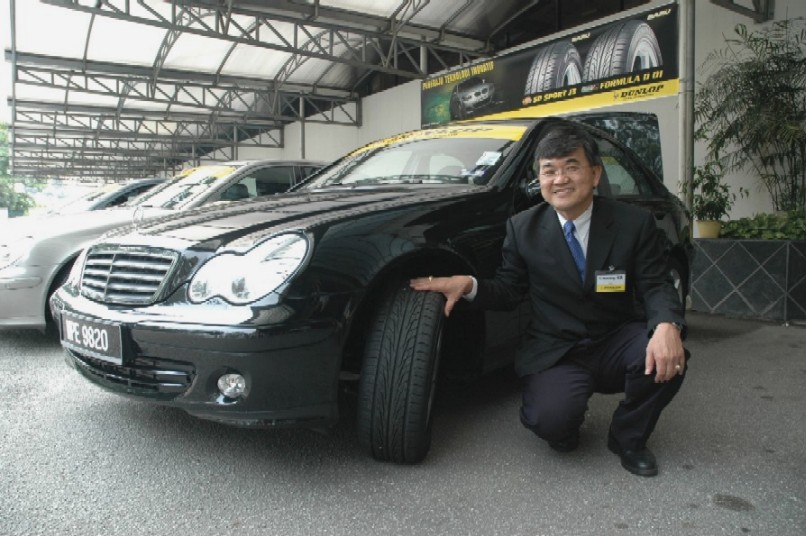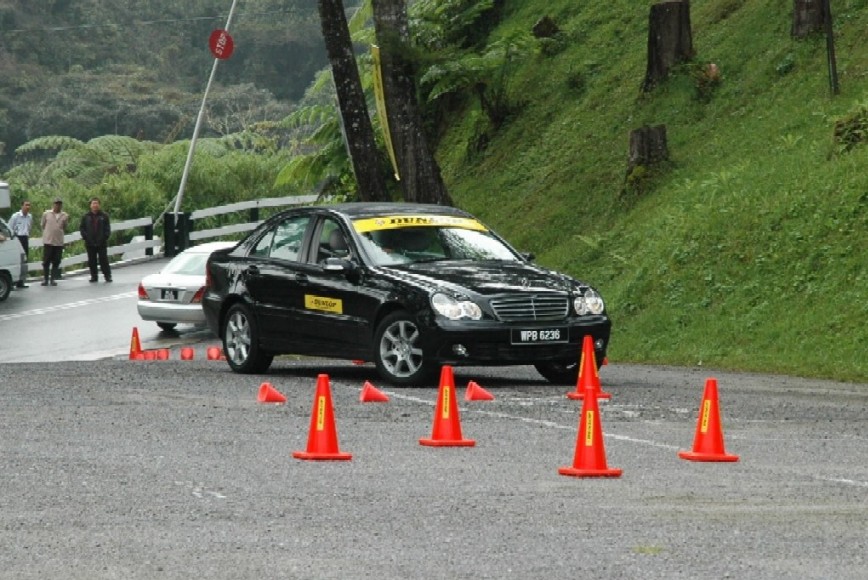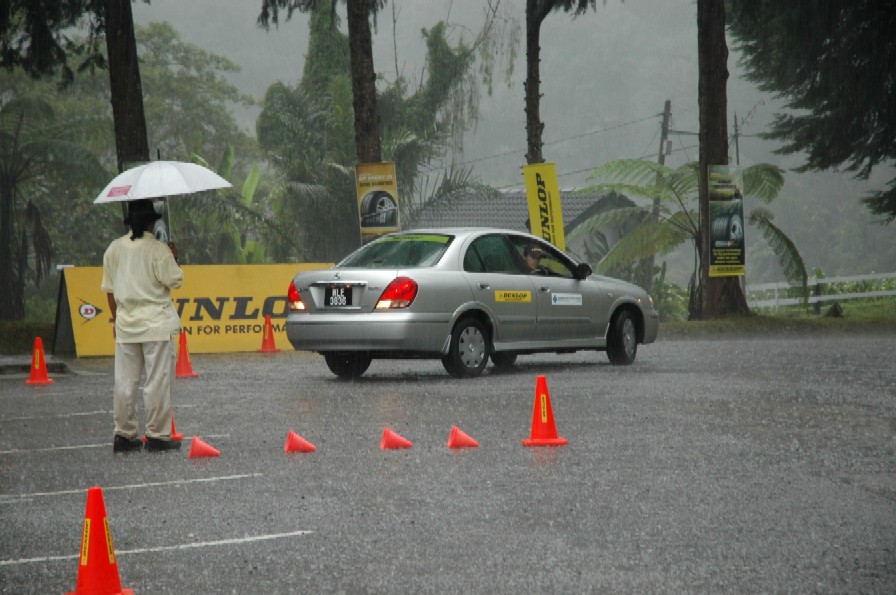Dunlop Re-Introduces the Aquajet
Take a time rewind back to the 1970’s, and if you were around then, you would remember the Dunlop SP Sport Formula 70-Series tyre, popularly known for its excellent wet weather handling. The key feature of the Dunlop SP Sport tyre was its array of ‘AQUAJETS’ that acted like little pumps that squeezed water out from under the contact patch to allow rubber contact with the road, resulting in the tyre having more grip on the road under wet conditions. At that time, the Series Production Races for local production cars also had a regulation that only locally produced tyres could be used in the race competition, and race drivers were quick to find that the Dunlop SP Sport 70 was the best local tyre around, and almost every car that took part in the Series Production Car races used Dunlops. To the uninitiated, it must seem kind of strange to use 70-series profiles on a race car, but at that time, other than some imported Kleber and Parnelli Jones tyres that were 60-Series (which were banned from use in the race on account of their being imported and thus cost more) the 70-Series tyre was the lowest profile available for sale; the lower profiles came about very much later.
Now, Continental Sime Tyre has made a comeback on the Dunlop brand with its introduction, or should I say the re-introduction of not one, but two tyres with the nostalgic names of Dunlop SP Sport J3, and Dunlop Formula D01, both of which are derived from the original Dunlop SP Sport Formula series. Speaking at the recent media launch of the two new tyres, Mr. Choong Kee Seng, Sales Director of Continental Sime Tyres Marketing Sdn Bhd, said that the two new Dunlops were developed to have not only good wearing properties, but to carry on the superb wet weather performance characteristics of the Aquajets.
Of course, tyre research has undergone development in leaps and bounds since the 1970’s, but the objective of developing tyres with excellent wet weather characteristics remains the core direction. The water dispersal grooves are very different from the shape of the original aquajets, but the function remains the same. Pricing is another factor taken into consideration; in the hierarchy of the Continental Sime Tyre product portfolio, the Dunlops sit in between thee higher priced Continental brand and the competitively priced Sime Tyres, effectively providing a bridging effect between the two. Translated to the real world, this means that the Dunlops will be priced lower than the Continental brand, but a little higher than the Sime Tyre in the same size and category.
Within the two Dunlop tyres, the Dunlop Formula D 01 is more performance oriented while the SP Sport is a long distance, high mileage tyre, made principally to suit people who need a low cost per kilometre. Both are steel-belted, of course, (in case any one of you still remember the original Dunlop SP Sport Formula 70 was nylon-belted), and rubber compounds are the latest available from Continental. The Formula D 01 is a directional tyre (to maximise the water dispersal action, and road grip).
The Dunlop Formula D 01 is available in sizes from 15 inch to 17 inch, and in profiles from 65-Series to 40-Series, while the Dunlop SP Sport is available in 13-inch and 14-inch sizes, and in 70-Series, 65-Series, 60-Series and 55-Series profiles.
We had the chance to try out the tyres on a drive to Cameron Highlands, using C-Class Mercedes-Benz cars and Nissan Sentras courtesy of DaimlerChrysler Malaysia and Edaran Tan Chong Motors respectively. It was a day trip for me, driving out on the Mercedes C-Class shod with the Formula D 01’s. When we arrived at Camerons, we had a small gymkhana event in which we used both the Mercedes C-Class with the D 01’s and the Sentra with the SP Sport.
In truth, I did not really have a chance to try out the SP Sport on the road; the only chance I had to try them out was during the gymkhana, which was held at relatively low speeds, and I really cannot say how good they are, but my colleagues who drove up in the Sentras did say that the performance was ‘surprisingly good’ for a low-cost, high mileage tyre.
Insofar as the Formula D 01 was concerned, I had the pleasure of driving from the Tapah Rest Halt all the way to Cameron Highlands using the Simpang Pulai highway, and all the way back to Kuala Lumpur by way of the old winding mountain road from Cameron Highlands to Tapah, and I must admit that I was impressed.
Taking over the wheel from my drive companions at Tapah, everything went smoothly on the North-South Highway to the turn-off at Simpang Pulai. The road feel was good; the tyres were quiet, while the ride was comfortable; nothing extraordinary, nor spectacular, just normal.
Turning on to the Simpang Pulai – Camerons Highway, the first few kilometres were uneventful, as the road was quite busy, and we stuck to the speed limit like the good boys we were. As the road started to wind up the mountain, the traffic got lighter, and we were able to try out the cornering performance of the D 01. The first few corners did not feel very good; there was quite a bit of sideways slip. However, after about five minutes of skittering around, the grip miraculously improved; only then did we realize that the shoulders were not ‘scrubbed in’ as yet; the layer of vulcanized rubber took a while to get scrubbed away as the tyres were new when we started the journey that morning, and up to then, we had been straight-lining the car on the highway section.
From then on, the Formula D 01’s came to life, and the drive became really enjoyable. I have mentioned before in previous articles that the Simpang Pulai-Camerons highway is an excellently designed road, and I say it again; all corners from the start of the road from Simpang Pulai all the way to the Kg Raja junction (where we take the turn-off to Brinchang) are either constant radius or increasing radius corners, which means that no corner will tighten up on you. For a driver, if you see one part of the bend, the rest of the bend is either exactly the same angle, or it will open up; this means you can set the car up for a corner, and hold the steering position and the speed throughout the bend without worrying that it will tighten up.
We kept on pushing through the bends, upping the limit each time, stretching it as much as we dared, but the Dunlop Formula D 01’s came through with shining colours. Breakaway, if any, is gradual, and very predictable, and negated by lifting off on the accelerator (which transfers weight to the front, and slows the car down at the same time); generally, the car holds its line without any fuss. There is hardly any tyre screech, and the road feel is excellent. The sidewalls do flex a little more than the standard tyres on the Merc (based on my previous driving experiences with the same vehicle), but that is not something the normal driver would feel or complain about.
On the way back, we took the old road from Camerons directly to Tapah, and this time it was raining lightly; the road was wet from the rain that had been falling since the late afternoon, and this presented us an excellent opportunity to try the wet performance of the tyres. Again, I must say the tyres came through very well. The car was sure-footed all the way, and although we came down at a very fast clip, (to the extent that one of our passengers got car-sick), there was never a moment when we were not in control.
Once we were on the highway, the traffic was quite sparse, and we were able to open the throttle. Suffice to say, the high speed and lane-change stability accorded by the tyres was excellent, without going into details.
On the whole, the Dunlops are very well designed and built, and I would say that they are as good and as safe as any tyre can be, and being made locally, they would be a whole lot cheaper than imported ones.




